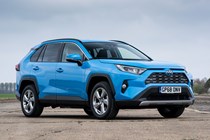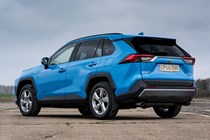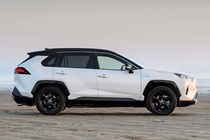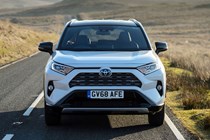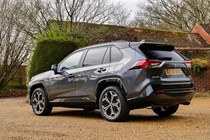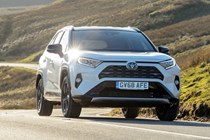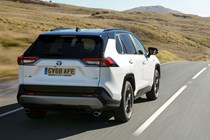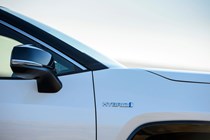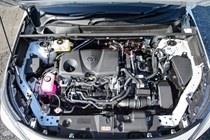
Toyota RAV4 running costs and reliability
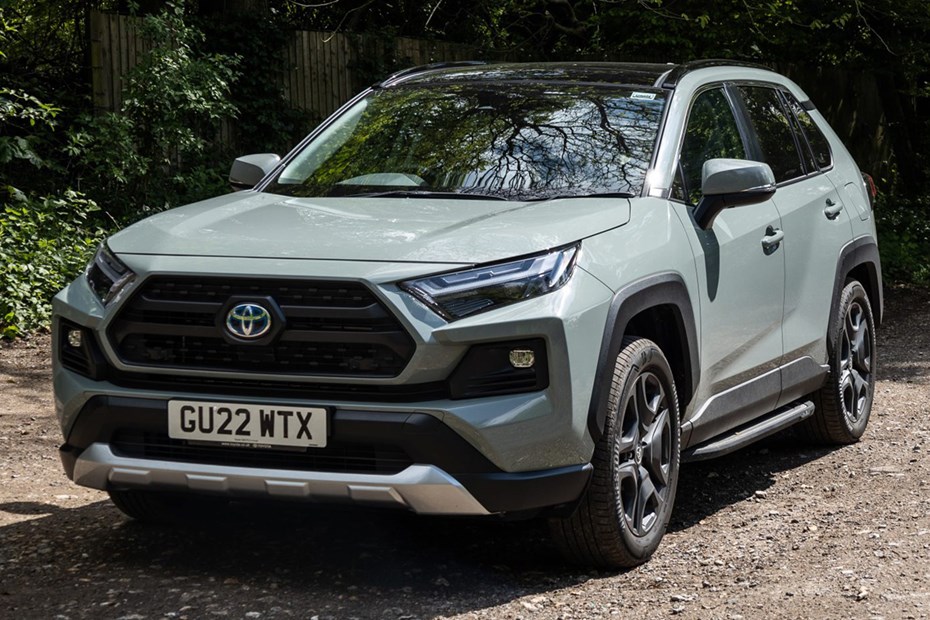
Miles per pound (mpp) ⓘ
| Hybrid petrol engines | 6.9 - 7.5 mpp |
|---|---|
| Plug-in hybrid petrol engines * | N/A |
Fuel economy ⓘ
| Hybrid petrol engines | 46.9 - 51.3 mpg |
|---|---|
| Plug-in hybrid petrol engines * | N/A |
- Petrol-hybrid yields low costs
- Strong residual values
- Servicing plan available
What are the running costs?
Hybrids save you money, at least on paper. The RAV4 is no exception, offering impressive fuel economy and low CO2 emissions, which contribute to an impressively low Benefit-in-Kind rating for company car drivers.
Toyota claims the standard RAV4 is capable of returning 48.7–50.4mpg, which is impressive for a car with a 2.5-litre petrol engine. The hybrid assistance and and limited electric-only range helps to bring this figure up. CO2 emissions are as low as 129g/km for front-wheel-drive versions and 131g/km for the all-wheel-drive model.
Officially, (in lab-test scenarios), the RAV4 Plug-in Hybrid will return 242mpg and CO2 emissions as low as 22g/km. Toyota also says it can travel 46 miles without needing to engage the petrol engine. In the real world, the RAV4 PHEV does a good job of using its battery power – and, even once you’ve emptied the cells, it’ll still return over 40mpg.
Once you’ve done your typical 20-mile commute, you can charge the battery in around four hours from a three-pin socket. A completely empty battery takes 7.5 hours on a three-pin plug, or 2.5 hours from a wallbox. Cables for both are included with the car and stored in a space under the boot floor.
Servicing and warranty
As standard, Toyota offers a three-year/60,000-mile manufacturer warranty – which is a bit of a shame considering the brand recently used to offer five years of cover. However, Toyota has just introduced its “Relax Warranty,” which adds 12 months of cover every time your Toyota is serviced at a main dealer or approved service centre. This is available for cars up to 10 years old or that have covered up to 100,000 miles, whichever comes sooner. Toyota also has eight years of warranty cover on its hybrid battery systems.
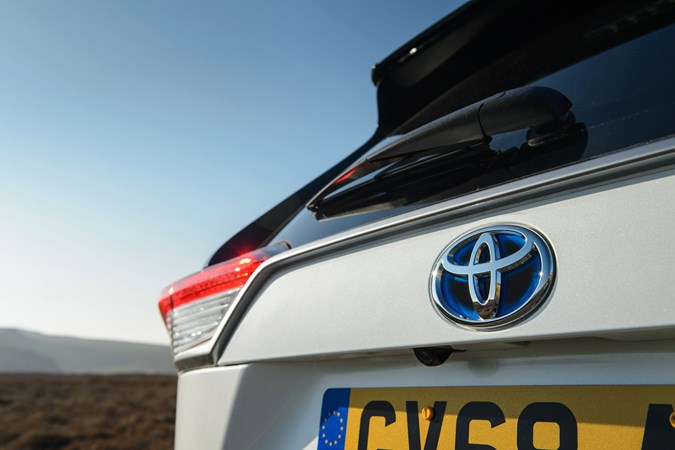
As with many rival manufacturers, Toyota offers a series of service plans that can cover the maintenance costs of the car’s first few trips to the mechanic. You can either purchase a service plan outright, pay for one in instalments, or combine it with any finance package that you might take out.
Reliability
- Superb reliability record
- Exhaustively tested platform
- Up to 10 years of warranty
Toyota is renowned for the reliability of its cars and commercial vehicles, consistently delivering high scores in customer satisfaction surveys. And, while the RAV4 uses a platform that was all-new when compared with the previous generation, we expect it to be similarly dependable.
One of the most significant differences between the RAV4 and its badge-engineered ‘rival’, the Suzuki Across, is that car’s much shorter warranty period, since you can’t get 10 years of cover from Suzuki dealers.
The current RAV4 is still relatively new, so we turn to the last model to give us a clue about what to expect. It’s good news for the RAV4, too, since the previous generation comes through with flying colours, with zero recalls in its six-year production run.
Ongoing running costs
| Road tax | £180 - £590 |
|---|---|
| Insurance group | 25 - 37 |
Get an insurance quote with

|
|





